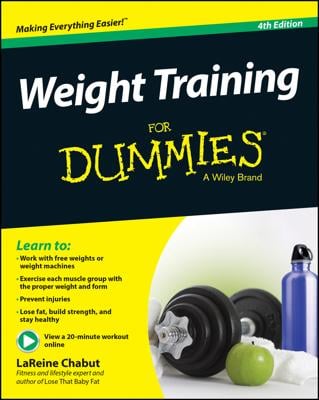Strength tests are designed to give you a starting point before you start a weight lifting program. If you start (and stick to) a good weight-lifting program, you'll likely see dramatic changes in your strength when you take another fitness test in a few months.
Most health clubs don't take true strength tests — they don't measure the absolute maximum amount of weight you're capable of lifting. Doing so can be dangerous. Instead, gyms test your muscular endurance: how many times you can move a much lighter weight. You can do many of these tests at home. Having a friend count for you and make sure you're doing the exercise correctly is a help. Here are some common muscular endurance measures.
Count how many push-ups you can do without stopping or losing good form. Men should do military push-ups, with their legs out straight and toes on the floor. Women do modified push-ups, with their knees bent and feet off the floor. Lower your entire body at once until your upper arms are parallel to the floor. Pull your abdominals in to prevent your back from sagging.
Use Table 1 or Table 2 to find out how you stack up against other people of your age and gender.
Table 1: Push-Ups — Men
Age: | 20-29 | 30-39 | 40-49 | 50-59 | 60+ |
Excellent | 55+ | 45+ | 40+ | 35+ | 30+ |
Good | 45-54 | 35-44 | 30-39 | 25-34 | 20-29 |
Average | 35-44 | 25-34 | 20-29 | 15-24 | 10-19 |
Fair | 20-34 | 15-24 | 12-19 | 8-14 | 5-9 |
Low | 0-19 | 0-14 | 0-11 | 0-7 | 0-4 |
Table 2: Push-Ups — Women
Age: | 20-29 | 30-39 | 40-49 | 50-59 | 60+ |
Excellent | 49+ | 40+ | 35+ | 30+ | 20+ |
Good | 34-48 | 25-39 | 20-34 | 15-29 | 5-19 |
Average | 17-33 | 12-24 | 8-19 | 6-14 | 3-4 |
Fair | 6-16 | 4-11 | 3-7 | 2-5 | 1-2 |
Low | 0-5 | 0-3 | 0-2 | 0-1 | 0 |

